Earlier today, I took a walk in the blustery winds of Washington DC with Drew Endy, a synthetic biologist from MIT. We had just been talking with Congressional staffers about the promise and perils of being able to manipulate life. There was too much to fit into the ninety minute session, and so our conversation spilled out on the street. And one of the things we talked about was the question of whether you can put your signature on a living thing.
The question came up thanks to Craig Venter and his team, who announced last week that they had synthesized the entire genome of a microbe. The research was impressive, but the press coverage was a bit ridiculous, as I explained here. The notion that Craig Venter was playing God (he isn't) has proven to be journalistic catnip. In fact, the story refuses to die. In their paper, Venter and his colleagues mentioned they had added "watermarks" to the synthetic genome to distinguish it from the natural one they had copied. On Monday, Wired reported that they had gotten scientists to decipher the watermarks, which turned out to be the names of the scientists themselves. Their discovery was picked up in the days that followed by other outlets.
Drew Endy thought this was just more non-story. For one thing, he pointed out that the names were no secret. The scientists published all the watermarks in a supplementary table. But it was a non-story in a deeper way, Endy said. Watermarks imply that these signatures were somehow permanent marks of their makers. But to Endy, a better term is graffiti. If Venter and his colleagues implanted their new genome in a cell and it actually came to life, mutations would eventually strike the watermarks, turning "Craig Venter" into gibberish.
It occurred to me that something even more drastic might happen. The scientists had put their signatures in parts of the genome that don't encode for proteins. Specifically, they chose spots that are sometimes invaded by parasitic pieces of DNA called transposons. Since the microbes don't suffer when the transposons strike these spots, putting watermarks in them wouldn't cause any harm either. But that also means that if the genome were inserted into cells, transposons might well insert themselves right into those watermarks, splitting them into fragments. Transposons also have a knack for slicing out chunks of DNA, so they might erase the signatures altogether.
If you're looking for literary immortality, you may not want to make DNA your paper and ink.


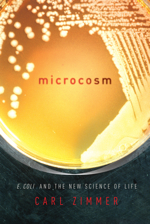
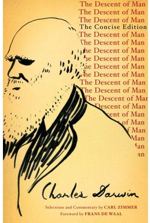

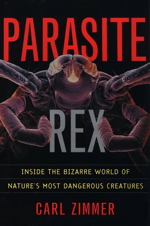
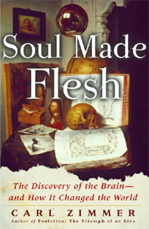


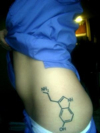



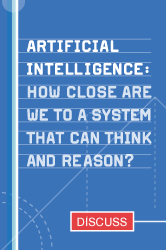
Comments
"If you're looking for literary immortality, you may not want to make DNA your paper and ink."
You almost certainly do want to make DNA your paper and ink.
You just need to encode your signature in something that is essential to cellular function. The highly conserved sequences in DNA (e.g. ribosomal genes) are some of the most persistent information on the planet. I don't know of any other way to encode information with a billion year lifetime unless it encodes an essential function of a self-replicating organism. Though I'd be interested in hearing suggestions (and so would these guys).
There are also lots of good reasons you might want a persistent signature (other than "literal immortality") - like signing your work. So when I find your engineered organism growing in my front yard, I know who to call ;)
jason
Posted by: Jason Kelly | January 31, 2008 2:05 AM
Jason--If you insert JASON KELLY into a conserved sequence, like a ribosomal gene, I think it's a safe bet you would disrupt that gene and--because the gene is so essential--kill the organism that's supposed to carry your signature. Evolution has left a signature, yes, but I don't think it's very easy for people to.
Posted by: Carl Zimmer | January 31, 2008 7:19 AM
The trick to putting a durable signature into a genome would be to find some place you could add that signature, and then figuring out some way to force the cell to do the error-checking for you with a lethal result if it fails. The second part is the tricky one. :-)
It is stories like this that make me wonder if some of the fault for the problem of communicating science is the journalists (or the people writing the press releases for the various institutions). The "sexy" part of this story for the general public is factually wrong. There are far too few Carl Zimmers (which is probably good for Carl, bad for society at large).
Posted by: Ron | January 31, 2008 7:52 AM
Well said. But even as graffiti, it left much to be desired.
http://blog.wired.com/wiredscience/2008/01/an-open-letter.html
Posted by: Brandon Keim | January 31, 2008 9:45 AM
Hi Carl,
Yeah, I didn't say it was easy to do :) We have a lot to learn about encoding our additions to genomes in a way that they are persistent (e.g. organisms 'evolve out' engineered constructs that put a big drain on cellular resources all the time.) But I still think that if you want to leave a message with the possibility of a billion-year lifetime, DNA (within a self-replicating organism) is really the 'pen and paper' of choice. It's the only information medium that has demonstrated that sort of longevity.
jason
Posted by: Jason Kelly | January 31, 2008 10:19 AM
If you put the watermark on a particularly angry retrovirus could you end up putting your mark/name on all sorts of critters from the eukaryote group?
Personally I would rather like to have a shrew walking around with my name on its genome, if only till the mutations started to rack up. And a penguin too.
Posted by: The Monkey Man | January 31, 2008 10:48 AM
I got lucky with my name
Posted by: CAT | January 31, 2008 10:54 PM
There's a thought. What actually is the longest word (in any language) encoded by the reference human genome? If I had the time and computer power I'd have a look...
Guesstimate - it'll be somewhere in the 4-5 letter range, depending on letter frequency in the target language.
Posted by: Peter Ellis | February 1, 2008 4:46 AM
Peter,
Just wander over to NCBI and blast to your hearts content. Taking "gvesstimate" (note the classical spelling) and checking against the protein refseq database finds:
>ref|NP_939322.1| Putative peptide ABC transport system ATP-binding protein [Corynebacterium
diphtheriae NCTC 13129]
Length=560
GENE ID: 2649530 DIP0959 | protein coding
[Corynebacterium diphtheriae NCTC 13129] (10 or fewer PubMed links)
Score = 26.1 bits (54), Expect = 215, Method: Composition-based stats.
Identities = 9/11 (81%), Positives = 10/11 (90%), Gaps = 0/11 (0%)
Query 1 GVESSTIMATE 11
GVESS I+ATE
Sbjct 278 GVESSEILATE 288
(sorry about the lack of proper formating)
Knock yourself out. I do have vague recollections of someone doing something similar a long time ago, when the database was much, much smaller.
Ron
Posted by: Ron | February 1, 2008 7:19 AM
If you're looking for literary immortality, you may not want to make DNA your paper and ink.
Regardless of if their signatures stay or not they have opened up a fascinating area. From an ethics and legal and may other perspectives. Will they patent the next one they make that doesn't have an analogue in nature? Follow that into the future and we arrive at can a person own a creature, then can a person own a person, and what percentage of made in the lab or made in the womb decides what constitutes if a person is of the ownable type!
Dave Briggs :~)
Posted by: Dave Briggs | February 1, 2008 10:56 AM
Eh, yes, but if the sequence you insert codes for part of an otherwise highly conserved protein, it will be subject to natural selection and will almost certainly be selected against. You'd have to come up with something that's at the same time clearly artificial and clearly beneficial. Good luck.
Posted by: David Marjanović | February 2, 2008 7:48 AM
> Transposons also have a knack for slicing out
> chunks of DNA ...
----------
Mr. and Mrs. Loom, we've had a successful delivery.
The good news is it's a girl.
The bad news is, it turns out she's carrying a copyright that belongs to Monsanto.
We suspect it's an accidental insertion from a mild viral infection early in gestation. It's been happening lately.
You can certainly argue that something like that put the copyright into your daughter, and of course you can hire an attorney to try to get control over her, in the courts, but under the new United States Imperial Meta Property Statute, we have to offer Monsanto first chance at taking her home.
Would you like to wait while we call them?
---------
Posted by: Hank Roberts | February 2, 2008 6:54 PM
@Hank: According to the article, because Transposons "have a knack for slicing out chunks of DNA" random mutations will mean the signature or copyright will be complete gibbereish within a few (cellular) generations. Certainly a pregnency is all but certian to knock out any trace of an original signature, as cellular generation occurs on a much more rapid pace on a fetus than on a child or adult.
Kudos for humor, though. :)
Posted by: Jed | March 24, 2008 11:27 AM